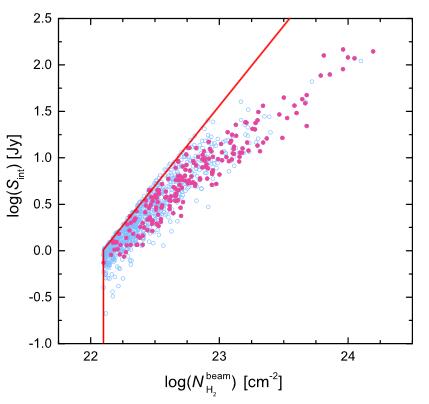Methanol masers, the powerful tools for investigating the star formation regions, are classified into two types based on their associations. Class II methanol masers are often found in close proximity to ultracompact H II regions, infrared sources, and OH masers. While Class I methanol masers are often found offset from these sources but are excited in the shock environments. Compared to over 1000 known class II methanol masers, class I methanol masers are relatively poorly studied and understood. To figure out the evolutionary relations between these two types methanol masers and the shock environments where activated class I methanol masers, it is very important to enlarge and establish a complete sample of class I methanol maser in the Galaxy. Xi Chen (Shanghai Astronomical Observatory and Guangzhou University) were the first to propose and give the criteria for searching the 95 GHz methanol masers toward large sample of Bolocam Galactic Plane Survey (BGPS) sources who found the class I methanol masers are associated with the properties of BGPS sources (Chen et al. 2012). The PMO and Chen’s research team observed 95 GHz methanol masers toward 1020 BGPS sources using the PMO 13.7 m radio telescope from May—June each year between 2012 and 2016. Among 213 detected methanol emission, 205 sources are masers, through the line width comparison between the methanol and HCO+ thermal emission. Of which 144 are new discoveries. Combining all the 95 GHz methanol masers that have been detected, a catalog of 481 class I methanol masers were complied. 
Figure: Integrated flux densities vs. beam-averaged H2 column density plotted on a log–log graph for 982 BGPS sources with and without 95 GHz methanol maser detections(marked by magenta solid circles and blue hollow circles, respectively). The red lines mark the criterion given by Chen et al.
The PMO Delingha 13.7 m radio telescope have conducted several systematic 95 GHz class I methanol masers surveys including toward: GLIMPSE point sources associated with BGPS clumps (Chen et al. 2012), molecular outflows (Gan et al. 2013) and large sample of BGPS sources (Yang et al. 2017). The PMO Delingha 13.7 m have discovered 232 95 GHz methanol masers so far, which discovered the richest class I methanol masers in the northern hemisphere.
The paper was published in the Astrophysical Journal Supplement Series. Detailed information of the paper can be found at: http://iopscience.iop.org/article/10.3847/1538-4365/aa6ff3/meta |

